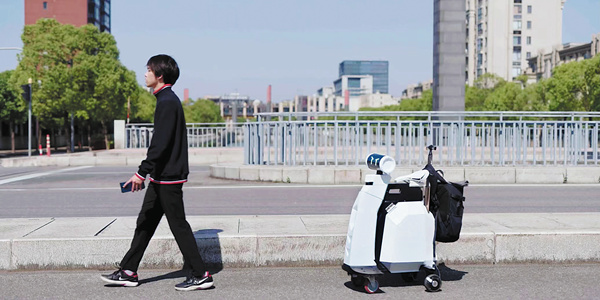

Machine learning
When Lin decided last year to take a gap year, due to the outbreak of the pandemic, before entering the Georgia Institute of Technology in the United States, the young man from Shanghai already had a bold idea about how he wanted to spend that time-his decision was to build an "obedient" robot that would follow him wherever he went.
The project took him about nine months to design, 3D-print, assemble and write the 250 lines of code required, according to his 12-minute video, which he posted on Bilibili on July 31. It has gone viral on the platform, racking up about 2.2 million views, and his account has attracted 381,000 followers.
The robot's name comes from the background music Devil's Swing (Remix) for the video game Bendy and the Ink Machine. It resembles a suitcase, which can follow Lin wherever he goes, day or night, and detect obstacles in its path. Besides carrying bags, it can be used for transport and even charges Lin's electronic devices.
"It is the most difficult project that I have done," Lin says. "Although it is not perfect, I hope that my video can inspire my peers to believe 'what you do matters' and that we can make a difference in people's lives."
It was the idea of "influencing more people" like him that was behind his decision to become a Bilibili uploader at the age of 17, he adds.
Lin did everything himself, from designing the robot with 3D modeling, manufacturing the physical parts and programming it, to assembling all the components and electronics.
The robot has a steel structure, a 3D-printed plastic shell and two 2D laser and radar scanners. The brain of the robot is powered by Arduino, an open-source electronics platform, and computing and coding solutions from computer manufacturer Raspberry Pi.
"Building Devil made me realize that the algorithm is the soul for any project of mine," says Lin, who now studies as a freshman at the Georgia Institute of Technology. "And I plan to change my major from electrical engineering to computer science."